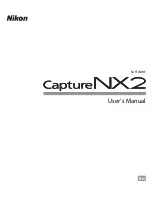
Authenticating Users Using RADIUS or
ExtremeWare XOS 10.1 Concepts Guide
131
To specify RADIUS accounting servers, use the following command:
configure radius-accounting [primary | secondary] server [<ipaddress> | <hostname>]
{<tcp_port>} client-ip [<ipaddress>] {vr <vr_name>}
To configure the timeout if a server fails to respond, use the following command:
configure radius-accounting timeout <seconds>
RADIUS accounting also makes use of the shared secret password mechanism to validate
communication between network access devices and RADIUS accounting servers.
To specify shared secret passwords for RADIUS accounting servers, use the following command:
configure radius-accounting [primary | secondary] shared-secret [<string>]
After you configure RADIUS accounting server information, you must enable accounting before the
switch begins transmitting the information. You must enable RADIUS authentication for accounting
information to be generated. You can enable and disable accounting without affecting the current state
of RADIUS authentication.
To enable RADIUS accounting, use the following command:
enable radius-accounting
To disable RADIUS accounting, use the following command:
disable radius-accounting
Configuring RADIUS
You can define primary and secondary server communication information, and for each RADIUS server,
the RADIUS port number to use when talking to the RADIUS server. The default port value is 1812for
authentication and 1813 for accounting. The client IP address is the IP address used by the RADIUS
server for communicating back to the switch.
RADIUS RFC 2138 Attributes
The RADIUS RFC 2138 optional attributes supported are as follows:
•
User-Name
•
User-Password
•
Service-Type
•
Login-IP-Host
Using RADIUS Servers with Extreme Switches
Extreme Networks switches have two levels of user privilege:
•
Read-only
•
Read-write
Because no CLI commands are available to modify the privilege level, access rights are determined
when you log in. For a RADIUS server to identify the administrative privileges of a user, Extreme
switches expect a RADIUS server to transmit the Service-Type attribute in the Access-Accept packet,
after successfully authenticating the user.
Summary of Contents for ExtremeWare XOS 10.1
Page 12: ...12 ExtremeWare XOS 10 1 Concepts Guide Contents...
Page 15: ...Part 1 Using ExtremeWare XOS...
Page 16: ......
Page 20: ...20 ExtremeWare XOS 10 1 Concepts Guide ExtremeWare XOS Overview...
Page 32: ...32 ExtremeWare XOS 10 1 Concepts Guide Accessing the Switch...
Page 74: ...74 ExtremeWare XOS 10 1 Concepts Guide Virtual LANs VLANs...
Page 80: ...80 ExtremeWare XOS 10 1 Concepts Guide Forwarding Database FDB...
Page 112: ...112 ExtremeWare XOS 10 1 Concepts Guide Status Monitoring and Statistics...
Page 133: ...Part 2 Using Switching and Routing Protocols...
Page 134: ......
Page 174: ...174 ExtremeWare XOS 10 1 Concepts Guide Virtual Router Redundancy Protocol...
Page 184: ...184 ExtremeWare XOS 10 1 Concepts Guide IP Unicast Routing...
Page 202: ...202 ExtremeWare XOS 10 1 Concepts Guide Interior Gateway Protocols...
Page 216: ...216 ExtremeWare XOS 10 1 Concepts Guide Exterior Gateway Routing Protocols...
Page 224: ...224 ExtremeWare XOS 10 1 Concepts Guide IP Multicast Routing...
Page 225: ...Part 3 Appendixes...
Page 226: ......
Page 234: ...234 ExtremeWare XOS 10 1 Concepts Guide Software Upgrade and Boot Options...
Page 242: ...242 ExtremeWare XOS 10 1 Concepts Guide Troubleshooting...
Page 256: ...4 ExtremeWare XOS 10 1 Concepts Guide Index of Commands...
















































